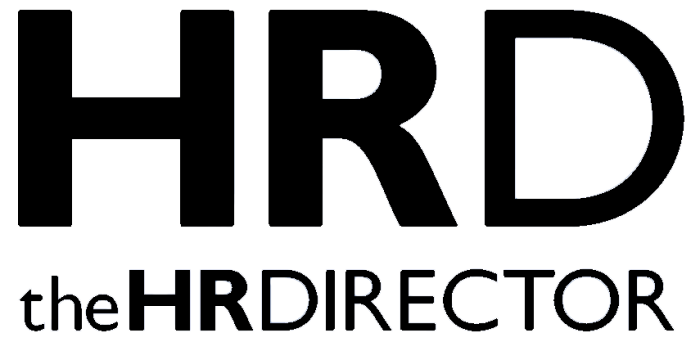The freelancer economy represents a significant transformation in the structure of labour and employment. This shift is not merely a trend; it is a profound change in how work is conceptualised and executed in contemporary society. The onus is now on businesses to abandon rigid, traditional employment models, and discover new ways to work with the surge of freelancers, both new and old, and reshape work for the future.
The Rise of Freelancing and the Death of Traditional Career Paths
The growth of the freelance workforce is striking. Projections indicate that by 2027, approximately 86.5 million Americans will engage in freelance work, constituting over half of the U.S. labor force. This surge is mirrored globally, where freelancers, between 154 million and 435 million, now account for up to 12% of the workforce, highlighting a widespread shift towards more flexible employment arrangements.
This transformation is driven by several factors. Technological advancements have revolutionised access to talent, enabling businesses to source specialised skills globally through digital platforms. Sure, there is an element of changing workforce preferences, reflected in a generational shift, finding younger professionals prioritising flexibility, autonomy, and the opportunity to pursue diverse projects over traditional career trajectories. It’s not just lifestyle choices though, market demands play their role, of course, economic necessity also plays its part, as companies seek cost-effective solutions to scale their workforce during uncertain times. For every whip-wielding old-school “leader” of a boss, driving people back to the office because they don’t know anything different, there are layoffs, budgets tightening and now seemingly a looming US recession to deal with – times are tight and many have their hands forced to find work elsewhere. The freelance life isn’t solely comfort and freedom, for many, it’s a need to fill a gap. Long gone are the days where the best talent is tied up in long term contracts, bouncing from bench to project and then sat warming themselves back on the bench, in their thousands, hugely talented individuals find themselves by choice, or not, free to work without the restraint of whether someone above them liked the look of a project or not.
The Next Generation Workforce: From Monothinking to Multiple Thinking
Not to be hyperbolic, but the traditional career dream is dead. The once-clear trajectory of becoming a lawyer, doctor, or businessman no longer holds the same allure for the next generation. Instead, we’re witnessing a shift toward a freelance ideology that embraces multiple interests, side hustles, hobbies, and rich social lives. This generation draws inspiration from various sources, moving from “monothinking” to “multiple thinking.”
Young professionals are no longer content with just work and family. They seek fulfillment through creative pursuits, social engagement, and diverse experiences, which means having the ability to balance these various aspects of life is paramount, with work being just one part of a multifaceted existence. This shift is reinforced by a focus on continuous learning, as individuals acquire diverse skills and experiences to maintain high energy levels and adaptability.
Benefits for Businesses in a Changing Landscape
There are numerous advantages for businesses embracing the freelancer economy and all that it offers. Agility and flexibility, for one, allow companies to rapidly adjust their workforce size and composition based on immediate project requirements, enabling a more dynamic response to market changes. In tough economic times, this is particularly handy, as businesses can easily scale down or up as needed.
Access to specialised expertise is another key benefit. Freelancers often possess niche skills unavailable within traditional workforces, enabling businesses to enhance their capabilities and innovate more effectively. It may be a tired and well trodden gripe, but overhead costs are often a significant burden, however, engaging freelancers is more cost efficient and can reduce the costs associated with full-time employees. It’s not like it can’t be done, look at film-making in the US, the Hollywood model is a prime example of creatives that hand pick their chosen squad for the desired output, to fit the ideas of the visionary. If you want a certain result, you choose the team that gets you there, nobody is picking Michael Bay from the bench when the investors need a Scorsese…
Restructuring Company DNA
Despite these advantages, integrating freelancers into existing workflows naturally presents challenges. Communication barriers must be addressed through clear channels, with clear communication and project management tools, to ensure seamless collaboration with remote freelancers. Organisations must establish rigorous vetting processes and clearly defined expectations for deliverables to maintain high standards and quality assurances.
Cultural integration is equally critical. While freelancers may not be permanent employees, fostering a sense of belonging through regular engagement and inclusion in company culture will undoubtedly maximise their contributions.
However, a more profound obstacle lies in overcoming control issues. Traditional “employ and control” mindsets in organisations reluctant to restructure their DNA will hinder adaptability of freelancers. Therefore, the future will belong to those companies that embrace a network of different working arrangements, blending full-time employees with freelancers to create dynamic, responsive teams.
A New Era of Work
Looking ahead, the freelancer economy will shape the future of work in several key ways. Blended workforces will become the norm, integrating freelancers alongside full-time employees to maintain core teams while leveraging external talent for specialised projects. Skill-centric employment will dominate, shifting focus from traditional job titles to specific competencies, especially as freelancers continuously upgrade their skills, allowing businesses to gain access to cutting-edge expertise. And it goes without saying, but AI empowerment will further solidify freelancers’ roles. The technology is already enhancing productivity by automating routine tasks and enabling freelancers to deliver higher-quality work more efficiently. Further technological integration will drive even more specialisation, making freelancers indispensable in modern business practices.
The Challenge for Labor Unions and Pension Systems
The rise of the freelancer economy poses significant challenges to traditional labor structures. Union representation is primarily designed for employees in large companies with monthly salaries, leaving freelancers outside this model. This raises questions about representation and collective bargaining for a workforce that operates outside conventional employment frameworks.
Pension systems face similar disruptions as the shift away from long-term employment threatens current models, which will necessitate new approaches. Portable benefits or dividend-based systems may emerge, allowing freelancers to accumulate retirement savings independently of a single employer.
Ultimately, the freelancer economy works because it delivers results-businesses gain agility, access to specialised talent, and cost efficiency. But it fails when companies refuse to relinquish control, clinging to outdated models of oversight instead of focusing on outcomes. The question is simple:
Do you measure success by time sheets or by actual results?
Companies that embrace flexibility, trust their people, and prioritise impact over micromanagement will thrive. Those that don’t will struggle to adapt in a world where the best talent no longer fits into rigid structures. The future of work belongs to those who build teams for performance, not just presence.









